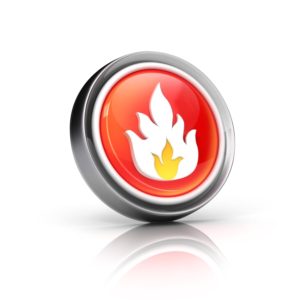
Class K Fires – To be able to fight a fire effectively, it is important to know how it starts and what is fueling it to burn. In most cases, fuel is an important factor and determines how the flame should be dealt with. Class K fires normally burn a certain type of fuel such as cooking oil and fats and can spread very quickly.
They are categorized under class B flames – since they consist of flammable liquids. Nonetheless, it is classed differently because of the distinct characteristics associated with it. Click here for the Best-Selling Fire Safety Products.
Types of dangerous cooking substances
Heat is an important element when it comes to cooking. Fats and oils are often used to generate heat since they can be raised temperatures quickly.
The highly flammable temperatures substances are commonly used to fry certain types of food. This means that the risk of experiencing fire during cooking is high.
How many times have you jumped out of your kitchen when flames went up while frying food?
It is therefore important to learn how to immediately control such fires when they happen to prevent them from spreading further.
Below are examples of commonly used cooking oils:
• Olive Oil
• Vegetable oils such as safflower, corn, and canola
• Butter
• Lard
• Bacon grease
• Margarine
Most class K fires are caused by fat and cooking oils that burst when cooking. Besides, there is also a risk of catching fire when substances overheat in the microwave.
How to fight Class K fires
Considering the fact that these types of fires are hotter compared to class B fires, the techniques used to extinguish fires in class B may not be effective in Class K flames.
The fire extinguishers for these types of flames are designed uniquely in order to put off the fire much faster. The extinguishers have a hood meant to cut off the oxygen as well as flatter the flames.
Cooking fat and oil splashes can cause severe burns on your skin. That’ why it is important to stay alert when using such vegetable oils to cook. The problem is that sometimes you cannot control or know when the flames will go up burning.
If you try to put off a class K fire, then you should be aware of the dangers you are putting yourself into. Even a firefighter should approach a class K fire with proper protective gear.
You should always ensure that you have the right extinguisher in your house to be able to deal with such fires effectively.
Firefighting equipment
The quickest and most effective way of fighting class K fires is saponification. All fires extinguishers approved for use in class K fires have a wet extinguishing chemical.
When extinguishing a class K fire, the chemical converts the cooking fat and oil into soap. The substance (which is non-combustible) works by absorbing the heat from the flames and getting rid of or reducing the elements that are fueling the fire.
Class K fire extinguishers also have a physical component that has something that appears like a hood and can be placed straight inside the flames.
How to protect your home or business against class K fires
All commercial and residential buildings with kitchens need to be well equipped with proper class K fire extinguishers. For example buildings such as cafeterias and restaurants should ensure that they follow stipulated local building codes when designing their kitchens.
Besides, businesses should also train their staff members on how to respond to different types of fires.
When it comes to a residential settings, class K fire is usually to starts in the kitchen. The fire can easily spread into other parts of the house if quick actions are not taken.
You should have the latest fire extinguishing equipment to deal with different types of fires and train every member of your household on how to use them. Click here for the Best-Selling Fire Safety Products.